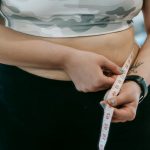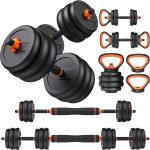Functional Fitness: Transform Your Life with Revolutionary Training Methods That Actually Work
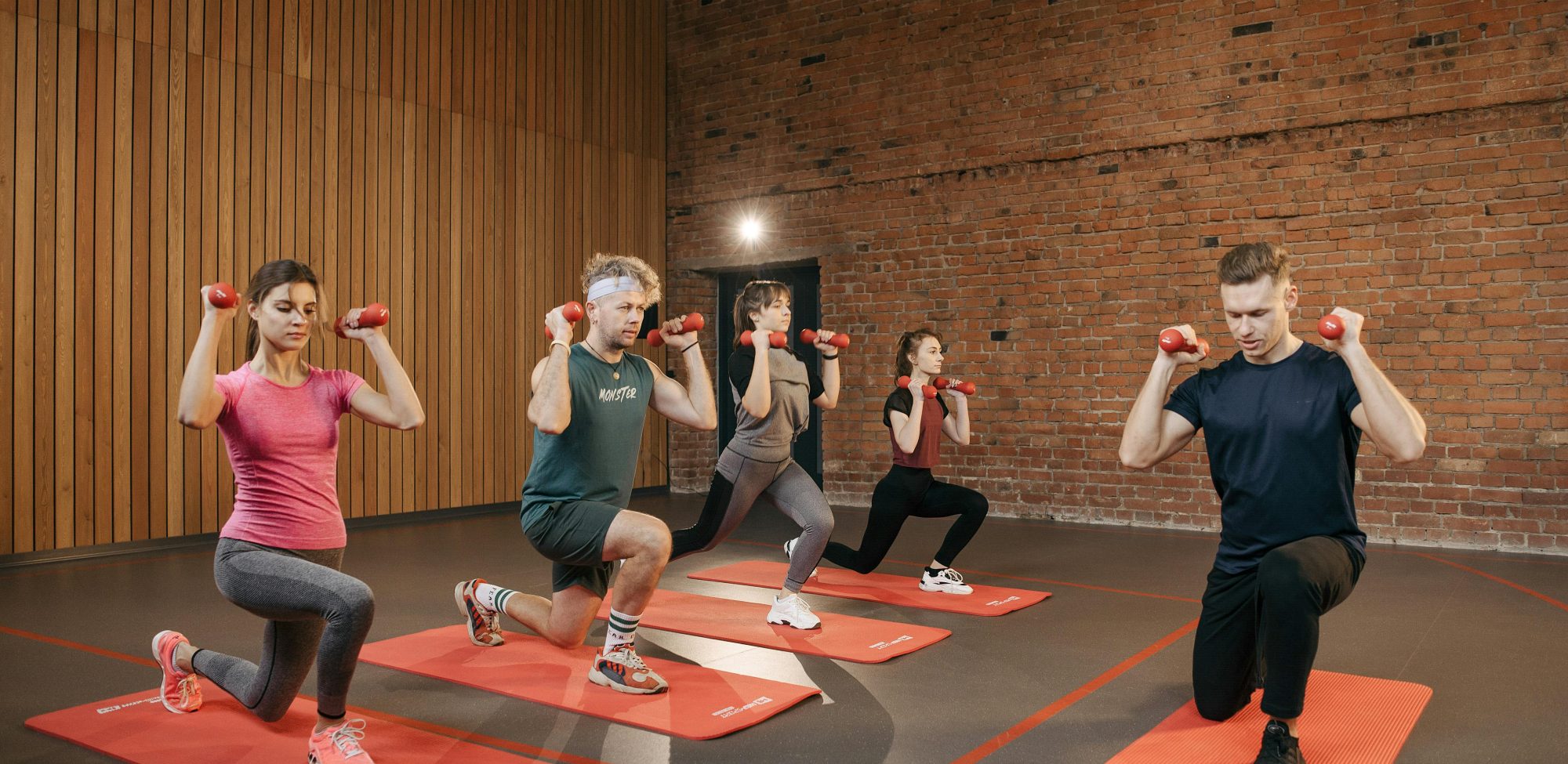
Functional Fitness: Transform Your Life with Revolutionary Training Methods That Actually Work.
In an era where chronic pain, sedentary lifestyles, and physical limitations plague millions of people worldwide, functional fitness emerges as a beacon of hope. This isn’t just another fitness trend it’s a scientifically-backed approach that bridges the gap between gym performance and real-world capability. Unlike traditional exercise methods that often leave you strong in the gym but weak in daily life, functional fitness prepares your body for the movements that truly matter.
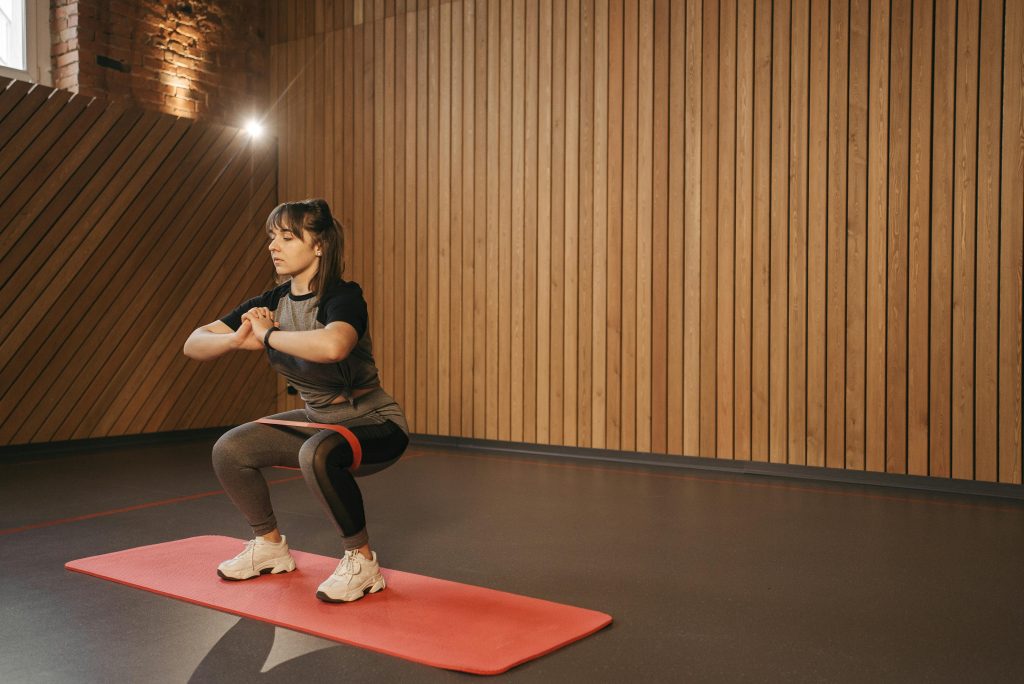
What is Functional Fitness? Understanding the Foundation
Functional fitness represents a paradigm shift in how we approach physical training. Rather than isolating muscles in artificial movement patterns, this methodology focuses on integrating multiple muscle groups through movements that mirror daily activities. Every exercise serves a purpose, every movement has meaning, and every workout prepares you for life’s challenges.
The human body evolved to move as an integrated system, not as individual muscle groups working in isolation. When you lift a heavy box from the floor, you’re not just using your biceps—you’re engaging your legs, core, back, and stabilizing muscles in a coordinated effort. Functional fitness recognizes this reality and trains your body accordingly.
The Science Behind Functional Movement
Research published in the Journal of Strength and Conditioning Research demonstrates that functional training improves neuromuscular control, balance, and proprioception more effectively than traditional resistance training. The key lies in the concept of movement patterns rather than muscle groups.
Human movement can be categorized into seven fundamental patterns:
- Squatting (sitting and standing)
- Lunging (walking and climbing)
- Pushing (moving objects away)
- Pulling (bringing objects closer)
- Hinging at the hip (bending and lifting)
- Rotating (twisting movements)
- Gait (walking and running)
Functional fitness programs are built around these patterns, ensuring that every aspect of human movement is addressed and improved.
The Life-Changing Benefits of Functional Fitness
Enhanced Daily Performance and Quality of Life
The most immediate benefit of functional fitness is the dramatic improvement in daily activities. Participants often report feeling stronger, more confident, and less fatigued during routine tasks. A study conducted by the American Council on Exercise found that individuals following functional training programs showed a 23% improvement in activities of daily living compared to those doing traditional weight training.
Consider Maria, a 45-year-old office worker who struggled with back pain and fatigue. After 12 weeks of functional fitness training, she could lift her groceries without wincing, play with her children without exhaustion, and maintain energy throughout her workday. This transformation isn’t unusual it’s the expected outcome of proper functional training.
Injury Prevention and Rehabilitation
Functional fitness serves as both prevention and cure for many common injuries. By strengthening the body through natural movement patterns, it addresses muscle imbalances and weaknesses that often lead to injury. The American Physical Therapy Association reports that functional training can reduce injury risk by up to 40% in active adults.
The approach is particularly effective for:
- Lower back pain (affecting 80% of adults)
- Knee problems (common in runners and athletes)
- Shoulder impingement (frequent in office workers)
- Hip mobility issues (prevalent in sedentary individuals)
Athletic Performance Enhancement
Professional athletes across all sports have embraced functional fitness as a cornerstone of their training. The transfer of gym strength to sport-specific performance is dramatically improved when training mimics the demands of the activity.
For example, a tennis player benefits more from rotational medicine ball throws than from seated bicep curls. A basketball player gains more from lateral lunges and jump training than from leg extensions. This specificity principle makes functional fitness superior for athletic development.
Metabolic Benefits and Body Composition
Functional fitness workouts typically involve compound movements that engage multiple muscle groups simultaneously. This creates a higher metabolic demand, leading to:
- Increased calorie burn during exercise
- Elevated post-exercise oxygen consumption (EPOC)
- Improved insulin sensitivity
- Better cardiovascular health
- Enhanced fat loss while preserving muscle mass
Mental Health and Cognitive Benefits
The complexity and variety inherent in functional fitness provide significant cognitive benefits. Learning new movement patterns stimulates neuroplasticity, while the confidence gained from improved physical capability enhances mental well-being. Research shows that functional training can reduce symptoms of anxiety and depression while improving overall mood and self-esteem.
Building Your Functional Fitness Foundation
Essential Movement Assessments
Before beginning any functional fitness program, it’s crucial to assess your current movement quality. Common assessments include:
Overhead Squat Assessment: Reveals mobility restrictions and stability issues throughout the kinetic chain.
Single-Leg Balance Test: Evaluates proprioception and unilateral strength.
Shoulder Mobility Screen: Identifies restrictions that could limit upper body function.
Core Stability Test: Assesses the ability to maintain spinal alignment during movement.
These assessments help identify weak links in your movement chain and guide program design.
Progressive Program Design
Functional fitness programs should follow a logical progression:
Phase 1: Movement Quality (Weeks 1-4)
Focus on learning proper movement patterns with bodyweight exercises. Emphasize form over intensity.
Phase 2: Strength Development (Weeks 5-8)
Add external resistance while maintaining movement quality. Introduce basic equipment like resistance bands and light weights.
Phase 3: Power and Integration (Weeks 9-12)
Incorporate explosive movements and complex patterns. Combine multiple movement patterns into flowing sequences.
Phase 4: Sport-Specific Application (Weeks 13+)
Tailor exercises to specific activities or sports. Focus on movement velocity and reactive training.
Essential Equipment for Functional Fitness Success
Recommended Amazon Products for Your Journey
TRX ALL-IN-ONE Suspension Trainer The TRX system represents the pinnacle of functional fitness equipment. This versatile tool uses bodyweight and gravity to provide resistance, allowing for hundreds of exercises that improve strength, balance, flexibility, and core stability simultaneously. The system is incredibly portable, making it perfect for home use, travel, or outdoor workouts.
What makes the TRX exceptional for functional fitness:
- Multi-planar movement capability
- Adjustable resistance based on body position
- Scalable for all fitness levels
- Develops functional strength patterns
- Includes comprehensive workout guides
The TRX system particularly excels at developing the core stability and proprioception that are hallmarks of functional fitness. Every exercise requires core engagement and balance, creating a more integrated training experience.
Resistance Bands Set with Door Anchor A high-quality resistance band set provides variable resistance that closely mimics real-world movement patterns. Unlike free weights, bands provide accommodating resistance—increasing tension as the band stretches, which matches the strength curve of many human movements.
Kettlebell Set (Various Weights) Kettlebells are perhaps the most functional of all training tools. The offset center of gravity challenges stability while the ballistic movements develop power and coordination. Start with a moderate weight (15-20 lbs for women, 25-35 lbs for men) and progress gradually.
Balance Board or BOSU Ball These tools add an element of instability that enhances proprioception and challenges the stabilizing muscles. They’re particularly valuable for rehabilitation and older adult training.
Advanced Functional Fitness Techniques
Unilateral Training
Most daily activities involve single-limb dominance, yet many traditional exercises are bilateral. Functional fitness emphasizes unilateral training to:
- Identify and correct imbalances
- Improve single-limb strength and stability
- Enhance athletic performance
- Reduce injury risk
Examples include single-leg squats, one-arm rows, and alternating exercises that challenge the core to resist rotation.
Multi-Planar Movement
Life doesn’t happen in a single plane, yet many gym exercises are limited to sagittal plane movement. Functional fitness incorporates:
- Sagittal plane (forward/backward)
- Frontal plane (side-to-side)
- Transverse plane (rotational)
This approach ensures comprehensive movement preparation and reduces the risk of injury during unexpected movements.
Reactive Training
The ability to react quickly to unexpected stimuli is crucial for injury prevention and athletic performance. Functional fitness incorporates reactive elements through:
- Perturbation training on unstable surfaces
- Reaction ball exercises
- Partner-based reactive drills
- Cognitive loading during exercises
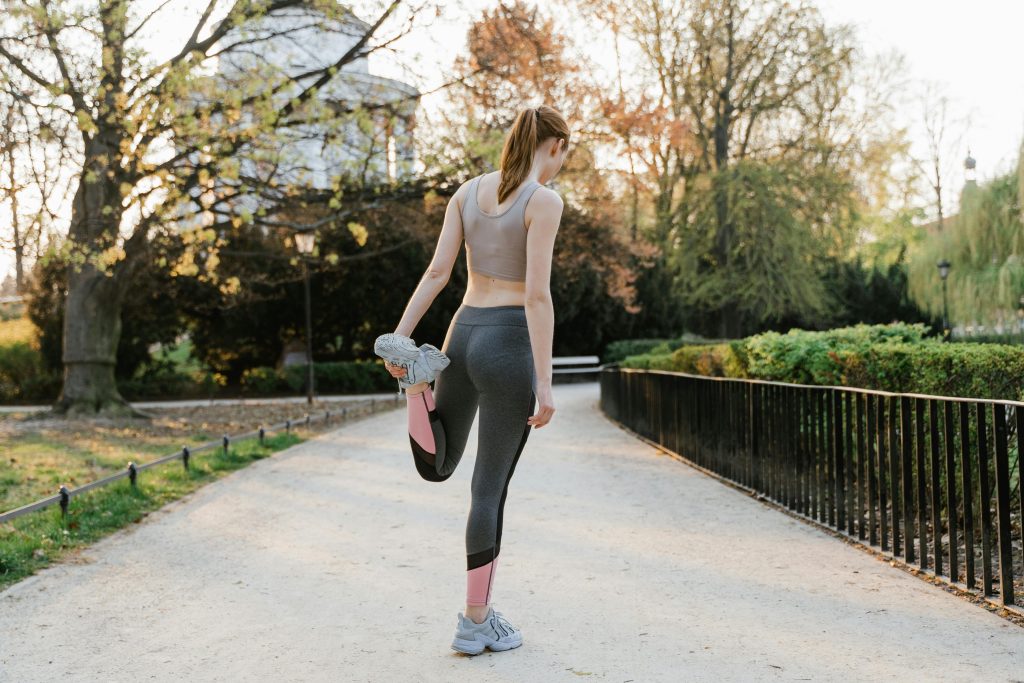
Sample Functional Fitness Workout Programs
Beginner Program (3 days/week)
Day 1: Foundation Building
- Bodyweight squats: 3 sets of 10-15
- Push-ups (modified if needed): 3 sets of 8-12
- Plank: 3 sets of 30-60 seconds
- Glute bridges: 3 sets of 12-15
- Bird dog: 3 sets of 8 each side
- Dead bug: 3 sets of 8 each side
Day 2: Movement Integration
- Goblet squats: 3 sets of 10-12
- TRX rows: 3 sets of 8-10
- Single-leg deadlifts: 3 sets of 6 each leg
- Lateral lunges: 3 sets of 8 each side
- Farmer’s walks: 3 sets of 30 seconds
- Pallof press: 3 sets of 10 each side
Day 3: Dynamic Movement
- Squat to press: 3 sets of 8-10
- Reverse lunge with rotation: 3 sets of 6 each side
- Mountain climbers: 3 sets of 20 total
- Bear crawl: 3 sets of 10 steps forward/back
- Turkish get-up (modified): 3 sets of 3 each side
Intermediate Program (4 days/week)
Day 1: Lower Body Dominance
- Barbell back squats: 4 sets of 8-10
- Single-leg RDLs: 3 sets of 8 each leg
- Lateral lunges with reach: 3 sets of 10 each side
- Step-ups: 3 sets of 10 each leg
- Calf raises: 3 sets of 15
- Single-leg glute bridges: 3 sets of 12 each side
Day 2: Upper Body Integration
- Pull-ups/assisted pull-ups: 4 sets of 5-8
- Push-up variations: 3 sets of 10-12
- TRX Y-pulls: 3 sets of 12
- Overhead press: 3 sets of 8-10
- Renegade rows: 3 sets of 6 each side
- Plank variations: 3 sets of 45 seconds
Day 3: Power and Agility
- Kettlebell swings: 4 sets of 15
- Box jumps: 3 sets of 8
- Medicine ball slams: 3 sets of 10
- Lateral bounds: 3 sets of 8 each side
- Burpees: 3 sets of 8
- Agility ladder drills: 3 sets of 2 patterns
Day 4: Stability and Mobility
- Single-leg stands: 3 sets of 30 seconds each leg
- BOSU ball squats: 3 sets of 12
- Stability ball rollouts: 3 sets of 10
- Yoga flow sequence: 15 minutes
- Foam rolling routine: 10 minutes
Advanced Program (5-6 days/week)
Advanced practitioners can incorporate:
- Olympic lifting variations
- Plyometric progressions
- Sport-specific movement patterns
- Complex training combinations
- Periodized loading schemes
Nutrition for Functional Fitness Success
Fueling Functional Movement
Functional fitness demands place unique nutritional requirements on the body. The multi-joint, multi-muscle nature of functional exercises requires:
Pre-Workout Nutrition
- Complex carbohydrates for sustained energy
- Moderate protein for muscle preparation
- Adequate hydration
- Timing: 1-2 hours before exercise
Post-Workout Recovery
- Protein for muscle repair (20-25g)
- Carbohydrates to replenish glycogen
- Anti-inflammatory foods
- Timing: Within 30 minutes post-exercise
Supplements for Enhanced Performance
While whole foods should be the foundation, certain supplements can support functional fitness goals:
Creatine Monohydrate: Enhances power output and recovery Fish Oil: Reduces inflammation and supports joint health Vitamin D: Critical for bone health and muscle function Magnesium: Supports muscle function and recovery
Common Mistakes and How to Avoid Them
Progressing Too Quickly
Functional fitness requires patience and progressive overload. Common mistakes include:
- Adding weight before mastering movement patterns
- Attempting advanced exercises without proper foundation
- Ignoring pain or discomfort signals
- Skipping warm-up and cool-down routines
Neglecting Recovery
The complex nature of functional fitness training places significant demands on the nervous system. Adequate recovery includes:
- 7-9 hours of quality sleep
- Stress management techniques
- Active recovery days
- Proper nutrition timing
Lacking Consistency
Functional fitness benefits compound over time. Sporadic training yields minimal results. Successful practitioners:
- Establish realistic schedules
- Track progress consistently
- Adjust programs based on results
- Maintain long-term perspective
Special Populations and Functional Fitness
Older Adults
Functional fitness is particularly beneficial for older adults, addressing age-related concerns:
- Fall prevention through balance training
- Maintenance of independence
- Bone density preservation
- Cognitive function enhancement
Modifications include:
- Emphasis on stability and balance
- Slower movement tempos
- Chair-supported exercises when needed
- Focus on activities of daily living
Athletes
Sport-specific functional fitness enhances performance by:
- Improving movement efficiency
- Reducing injury risk
- Enhancing power transfer
- Developing sport-specific endurance
Rehabilitation Populations
Functional fitness principles are increasingly used in rehabilitation settings:
- Post-injury movement re-education
- Chronic pain management
- Neurological condition support
- Pre-surgical conditioning
The Future of Functional Fitness
Technology Integration
Modern functional fitness is being enhanced through:
- Wearable technology for movement analysis
- Virtual reality training environments
- AI-powered program design
- Biomechanical assessment tools
Evidence-Based Evolution
Ongoing research continues to refine functional fitness methodologies:
- Neuroplasticity and movement learning
- Fascia research and movement quality
- Hormonal responses to functional training
- Long-term health outcomes

Conclusion: Your Journey to Functional Fitness Mastery
Functional fitness represents more than a training methodology—it’s a philosophy that recognizes the body’s inherent need for integrated, purposeful movement. By embracing this approach, you’re not just building muscle or losing weight; you’re preparing your body for a lifetime of confident, capable movement.
The journey begins with a single step, a single squat, a single push-up performed with intention and purpose. As you progress, you’ll discover that functional fitness doesn’t just change how you look—it transforms how you move, how you feel, and how you approach life’s physical challenges.
Whether you’re a busy professional seeking to counteract the effects of desk work, an athlete looking to enhance performance, or someone simply wanting to age gracefully and maintain independence, functional fitness offers a path to achieve your goals.
Start today. Your future self will thank you for the investment in movement quality, strength, and vitality that functional fitness provides. Remember, the best program is the one you’ll actually follow, so begin at your current level and progress steadily toward your goals.
The time for excuses is over. The time for transformation is now. Welcome to your functional fitness journey.
